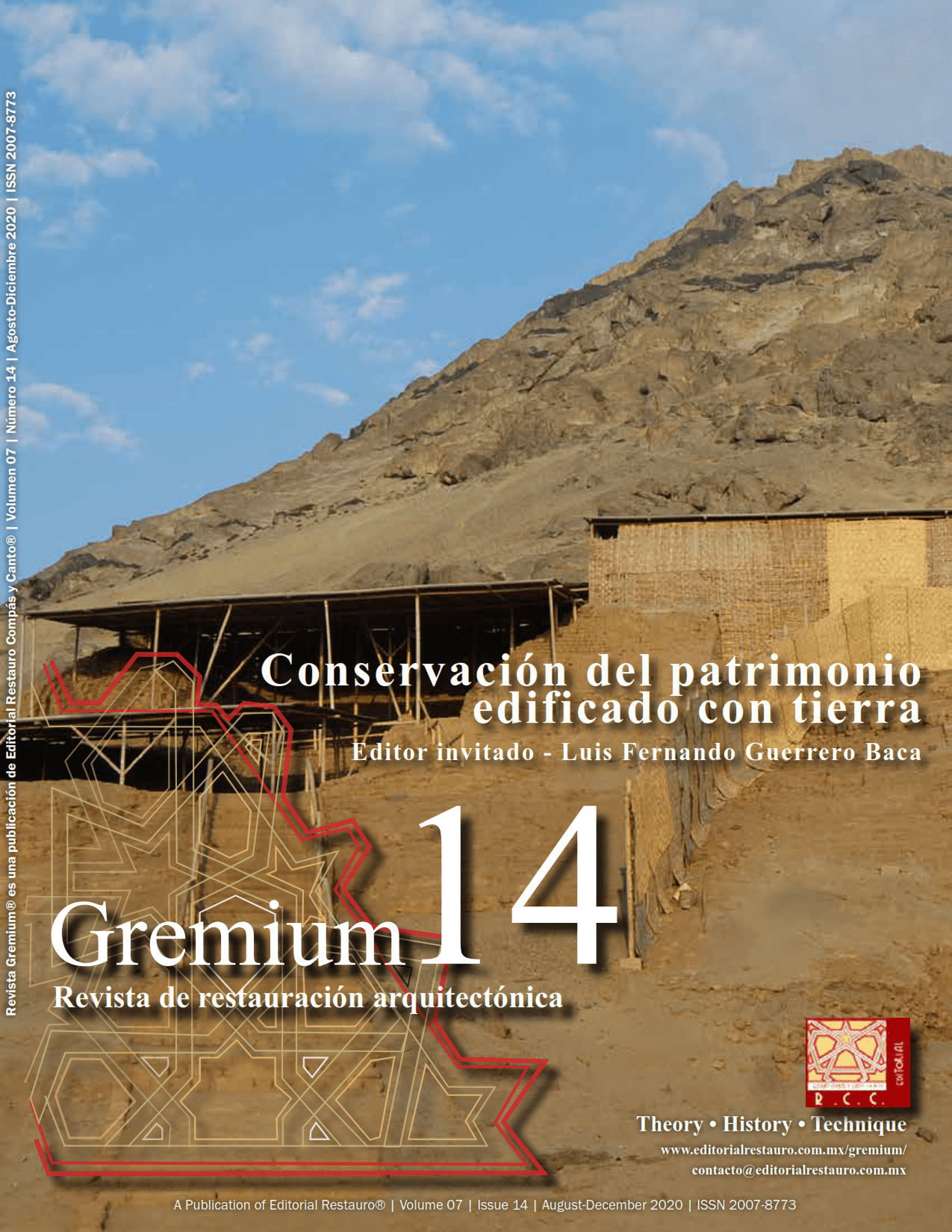Integration of earth and lime in architectural restorations
DOI:
https://doi.org/10.56039/rgn14a11Keywords:
clays, density, compaction, stabilization, calcium hydroxideAbstract
When some volumes of walls, roofs or plaster of
earthen architecture are lacking, conventional
“grafts” made with plastic material have been
used as fillers. Although this strategy solves
part of the problem, the reality is that adequate
adhesion with the substrates is never achieved
due to the shrinkage of the integrated areas. Given
this problem, a procedure has been developed in
which, from the control of humidity, the addition
of lime and compaction processes will generate
much more stable components. Thus, a better
link to the historical substrate, greater density,
water saving is achieved and the retraction and
detachment of the integrated parts is eliminated.
In addition, over time the lime reacts with the
clays and acquires greater strength and durability.
This article describes some theoretical and
practical considerations for the implementation
of this conservation and restoration technique,
which has a high application potential due to its
practical, economic and ecological benefits.
Downloads
Downloads
Published
Issue
Section
License

This work is licensed under a Creative Commons Attribution-NonCommercial-ShareAlike 4.0 International License.























